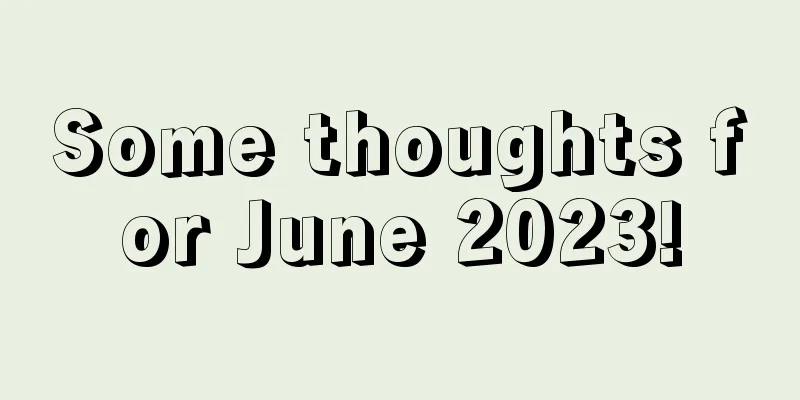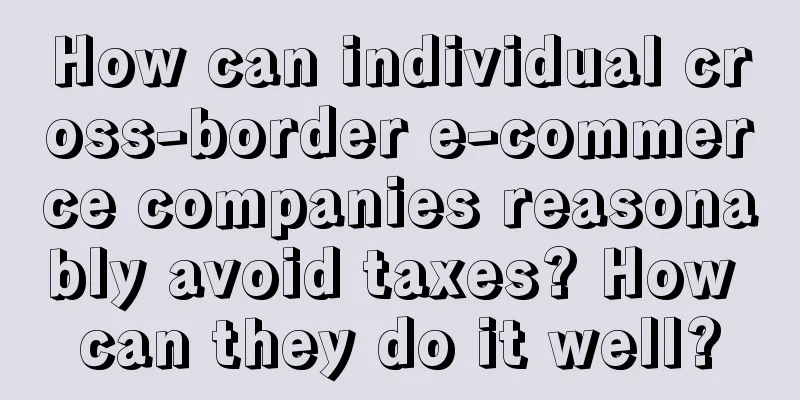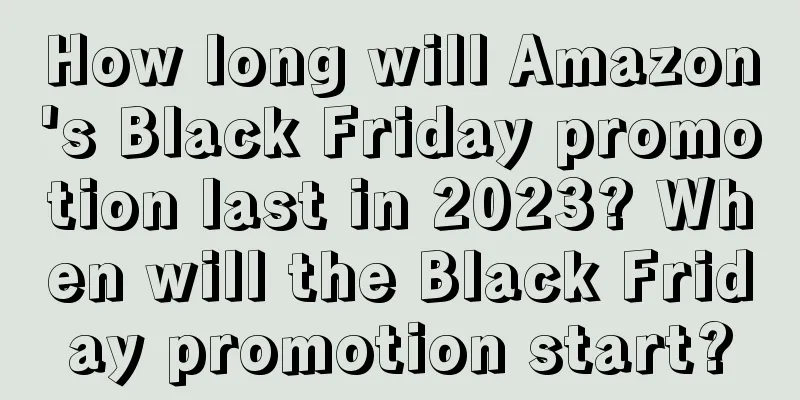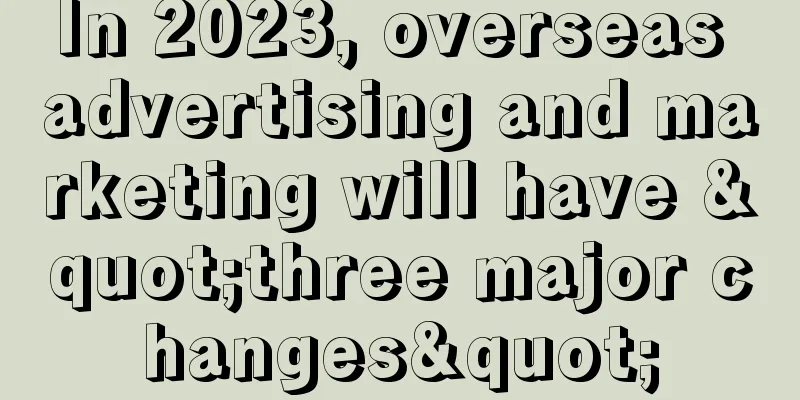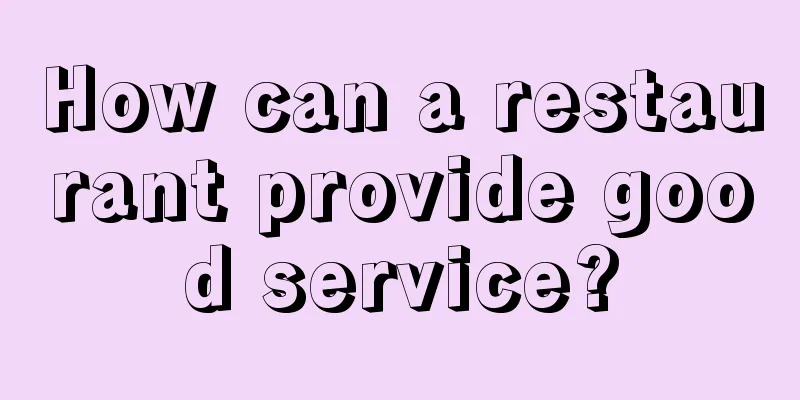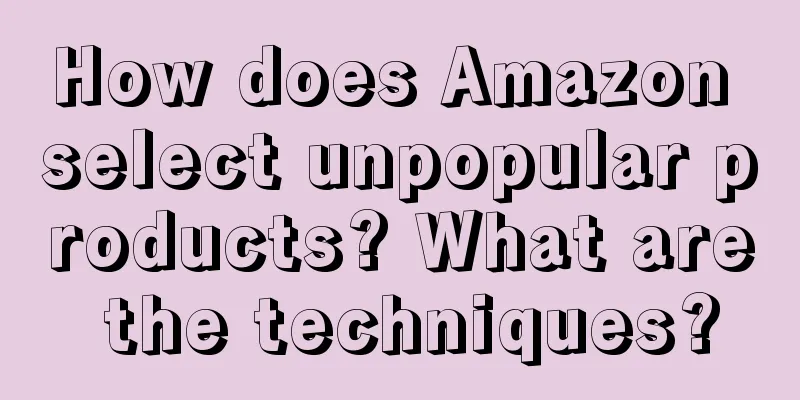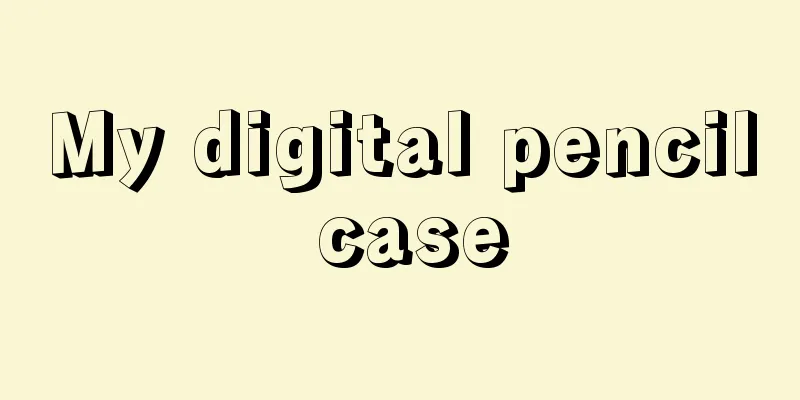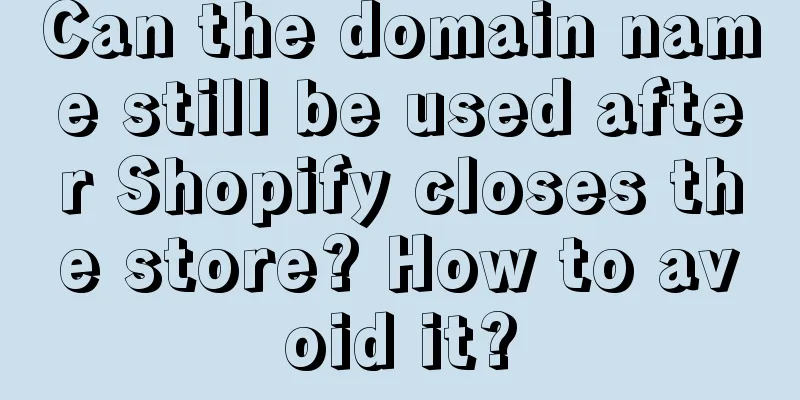Brand No. 1: How to use USP and write advertising slogans
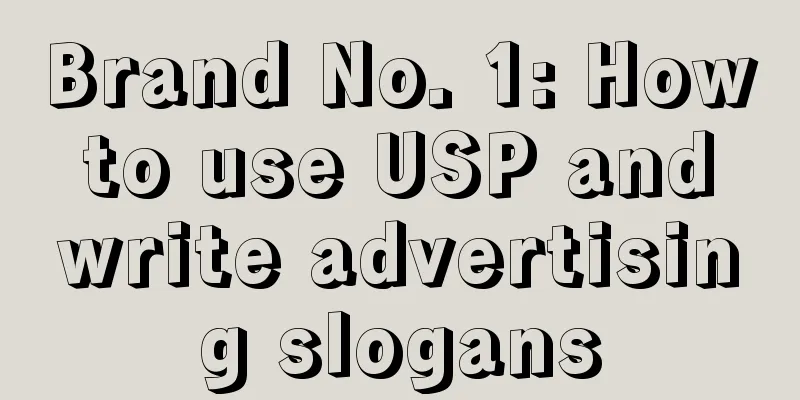
1. USPUSP stands for "Unique Selling Proposition" which means a unique selling proposition or "unique selling point". Many times we tend to go to two extremes, either believing that it is all truth and worshipping it as if it were a god, or thinking that it is worthless and trampling on it underfoot. The same problem exists in our understanding of unique selling points. In fact, USP can be used to spread differentiation, and it can even be the best slogan to spread differentiation. The premise is that on the basis of clear core differentiation, when expressing it dramatically, we still need to learn USP. However, if USP is separated from the core differentiation, it is pseudo-differentiation and can easily become a self-congratulatory product copywriting. What consumers get from advertisements is not what companies rigidly assign to advertisements, but what is discovered in the potential consumers’ cognition (what potential consumers intend but do not express) - differentiation is based on the differentiation of consumers’ cognition of category characteristics. In other words: differentiation is first of all the category standing out, and then the uniqueness and uniqueness of the brand. Without this, it becomes a self-congratulatory copywriting. How to avoid self-satisfaction? First of all, we need to distinguish the relationship between differentiation, profit points, and selling points. The three are a logical closed loop that progresses layer by layer. The core is to get through from the difference point to the profit point. The unique point of difference comes from consumers' recognition of category characteristics (i.e. brand positioning), and the point of interest is the functional value, experience value, and emotional value brought about on this basis. That is, the point of difference comes from consumers' recognition of category characteristics, and the point of interest is the function, value, and experience satisfaction brought about by the recognition of category characteristics. This is why we emphasize that you should not easily rely on USP (unique selling point) without clarifying the relationship between differences and benefits - it is easy to go astray.
2. Distinguish between differences and benefitsThe point of difference is what makes you different from others, and it is the real distinction between you and your competitors, while the point of benefit is the benefit that your point of difference brings to consumers. When the two are not consistent, you will find that consumers' perception of the brand is often focused on the point of difference rather than the point of benefit. This is - different is better than better.
Especially in the early stage of the category (early stage of the market), consumers have category awareness but brand awareness is relatively low. This stage is a typical case of communication winning over no communication, USP winning over brand image, and of course, the final outcome is that differentiation wins over no differentiation. For example, Chubang is showing off here, appealing to the two most important points of soy sauce for consumers: "delicious taste" and "natural safety". This USP advertising is effective. Chubang's growth rate in recent years has also been faster than that of the soy sauce brand leader Haitian Soy Sauce, ranking second. The positioning is delicious taste, and the differentiated production process (natural sun-drying for 180 days) is the differentiation slogan of its positioning. This is similar to the "peeled tomatoes for ketchup" made by Trout and Reese in "Positioning". In addition, one of the ten types of differentiation Trout mentioned in his speech in China is "production method". Page 49 of "Two-Hour Brand Literacy" clearly states: "After having brand positioning, USP can also become the most differentiated slogan for communication positioning." In the same period, Haitian was still using the brand image advertisement of "the taste of happiness" in its advertising appeal. It is not difficult to understand that the premise of phased effectiveness is that the opponent is making mistakes. Later, Haitian also began to follow Chubang in its publicity, but did not find an effective advertising appeal point. In the final analysis, it was still because of the lack of understanding of category characteristics, differentiation, and consumer cognition. In any case, eventually you have to occupy a characteristic, and this characteristic is your point of differentiation. The benefit point is the sense of value given to customers by occupying the characteristic and creating differences (this sentence is a bit confusing, it is recommended to read it 2 or 3 times). Haitian vs. Chubang: The soy sauce category is a big market. If you can start with new features of the category, there are still many opportunities. Chubang has the characteristics of freshness and the USP of 180 days. Haitian cannot follow suit, but must go the other way and go around. If it imitates and follows, the result can only strengthen consumers' perception of Chubang, not to mention Chubang's dramatic expression: "Just dry it here for 180 days", which is difficult for Haitian to surpass. For example, Yuanshai. The concept of Yuanshai here is the characteristics extracted from the category and consumer cognition. Focusing on the characteristics of Yuanshai, find the difference and then express the USP dramatically. Next: How to write a good USP requires clarifying a few questions: who to show it to, how to buy it, and which one to buy. 3. Six consumer rolesAccording to the purchasing process, consumer roles are divided into six types: information collector, decision maker, buyer, user, evaluator, and disposer. Sometimes consumers are multiple roles in one (6 in 1). That is, from information collection to final product disposal, it is one person, and sometimes these roles are completed by different personas, and even intervene in the purchase process and play a key role in the purchase. (The purchase behavior is regarded as a task that consumers need to solve, and each role is involved in the achievement of the task) For example, this year I will not accept any gifts during the Spring Festival. If I do accept any gifts, I will only accept the advertisement of Melatonin. This advertisement is not for users (the elderly), but for buyers (the young). There are also similar advertisements: when a noble person comes, give him a small can of tea; when you see a patient, give him Chuyuan. To this end, we need to develop a target population portrait from the six consumer roles, and we cannot just consider a single consumer role such as a buyer. The core of breaking the circle is to cover and penetrate the consumer roles in multiple dimensions, which is the only way to achieve the effect of sweeping the screen. Another example: Mixue Ice City’s “You Love Me, I Love You”, the communication behavior is not the role of the buyer and the user, but the information collector and the evaluator are playing the role of “hypertext” link. If the advertisement is only shown to a single buyer, it is at most a traffic advertisement and cannot bring brand effect. Another example: Rolls-Royce sells only a few hundred cars a year. If it is only from the perspective of buyers, it would be enough to put in information flow advertising. But the reality is that Rolls-Royce needs to be seen by more non-target users. Only in this way can Rolls-Royce have a social positioning and driving a Rolls-Royce can have a higher cognitive value (social value other than the car). 4. Four types of purchase and decision-makingAccording to the complexity of purchase decision and purchase complexity, it can be divided into four types: simple decision and simple purchase, simple decision and complex purchase, complex decision and complex purchase, and complex decision and simple purchase. Simple decision-making and simple purchase: For example, buying a bottle of water when thirsty is a simple decision-making and simple purchase type. In this case, the consumer role tends to be a combination of multiple roles. Simple decision-making and complex purchase: In this case, consumers usually seek help from experts and authorities during the purchase process. For example, studying abroad is a simple decision-making and complex purchase. At this time, the consumer's role will become more divided. Seeking medical advice is also a simple decision-making and complex purchase situation. In this case, the consumer's purchase decision is usually delegated to experts and consultants to help with the decision. For this type of purchase, the advertisement should build up strong credentials, and the product should reflect certain expert and exclusive positioning characteristics. Complex decision-making and complex purchase: This situation often occurs in B2B market purchases, that is, bulk purchases. In this case, the role of the consumer will be more process-oriented. Different people will be responsible for the information collector, purchase decision maker, purchaser, user, evaluator, and disposer. Complex decision-making and simple purchase: This situation often occurs in the consulting market. How to make a choice when there are several groups bidding for a project? Decision-making becomes the premise of purchase, but purchase becomes simple. Based on the above four points, the definition of consumer roles first requires an understanding of the difficulty of consumer purchase and decision-making. If we do not understand this level, it is difficult for us to understand the role change of consumers when they purchase. The premise of solving the problem correctly is to correctly define the problem. Information collector, purchase decision maker, buyer, user, evaluator, and disposer are the classic definitions of consumer roles in consumer behavior. Adding decision-making and purchase variables makes it easier to understand the relationship between roles and purchases. In addition, from the perspective of Internet platforms and traffic, the roles of consumers are divided into communication roles, traffic roles, and payment roles. When faced with a consumption decision, we are often eager to close the deal (traffic advertising), causing marketing to focus only on purchasing behavior and ignore the purchasing role. This approach can indeed sell goods, but it only goes so far (the role is single and brand awareness cannot be formed). For this reason, precisely because of the singleness of information (traffic) and the lack of consumer roles, it is impossible to cover a broad population, let alone the effect of screen-sweeping. The study of consumer roles is not only about the logic of buying and selling, but also includes the logic of dissemination and detonation. Information collector, purchase decision maker, purchaser, user, evaluator, disposer, dissemination role, traffic role, payment role. It is really blinding to only reach one consumer role. The definition and analysis of consumer purchasing roles are the big issues that we need to spend some time thinking about. 5. Three-layer logic1. Category selection, what to buy?When you go to a coffee shop, you often encounter similar questions: What do you want to drink, tea or coffee? It is obvious that tea and coffee are two different categories (category: a collection of products in the consumer's cognition). When buying mineral water, you think of Nongfu Spring, and when buying cola, you think of Coca-Cola. The brand that occupies the largest share in our minds and can be blurted out becomes a strong brand in the category. When there are no strong brands in a category, consumers will directly express their needs with the category itself. For example: buy some bananas, eat an apple. When there are strong brands in the category, we may say: buy some Chu oranges to try. Consumers think in terms of categories (what to buy) and express with brands (which one to buy). Category is the entrance to demand. The meaning of this sentence is that you must learn to use category words to intercept demand, and then say brand = category. 2. Where to buy? Channel brandJD.com, 7-11, and Walmart are essentially different channel brands, representing different channel attributes and having different channel characteristics. Different channel attributes mean that the people who buy things on the channel are different, which in turn forms the unique characteristics of the channel - the channel is the person, and the person is the channel. JD.com (e-commerce), 7-11 (convenience store), and Walmart (supermarket). The choice of channel brand is to answer the question of who the customer is and where the customer buys. Of course, we can also use the logic of people, goods, and places to look at it. For example, to buy home appliances, go to JD.com VS Tmall. That’s enough. We are more familiar with product brands, and often ignore the value of channel brands. Strong channel brands will become the entrance of traffic, and then use traffic to lead manufacturers. What channel you choose to enter is essentially because of the people behind the channel. Four channel focuses:
3. Which one to buy? Product/BrandWe are familiar with product brands, such as Nike vs. Adidas, Mengniu vs. Yili. If you understand what to buy and where to buy, you may know why product brands are not simple brand names (that is just a trademark) but represent categories or occupy characteristics, thus becoming the first choice of customers in the competition. For example, for cheese, choose Meike Landou vs. Meifei, 0 sugar cheese sticks. Six, eight categories1. The key is to
2. Noun, verb
3. Taste
4. Emotion
5. Craftsmanship
6. Competitiveness
7. Use existing spoken language and dialects
8. Dramatize performance
7. Every phenomenon is its essence, 5 advertising slogans1. Demand + verb + brand nameEven though we emphasize the value of the brand, we still need to be aware that consumers are more concerned about the demand itself and their own unsatisfied state. Therefore, the starting point of an advertising slogan is not the brand, but the demand; not the product, but the pain point, but the foothold must be the brand. To put it in the language of the Internet: demand is the traffic entrance and brands undertake the traffic. Consumers often focus on themselves first, and unmet needs are what open the door to their minds. Insight into needs is the starting point of advertising slogans, and key verbs are the next step. The slogan begins with the state of a certain unmet need of consumers, the middle part is the way to open the product, and the end is the brand name. That is: afraid of getting angry + drink + Wanglaoji. The finishing touch is the description of the need. If the fear of getting angry is changed to getting rid of anger or preventing getting angry, the potential population coverage will be at least 100 times smaller. The need for security is a basic human need, and the way to stimulate this need is to amplify fear 100 times. 2. Occupy the scene and provide solutions
"Giving gifts" is a typical scenario. When it comes to "giving gifts", people naturally think of festivals, requests, first meetings, friends and relatives, large and small bags, and smiling faces. At this time, there is no need to repeatedly ask about the needs. What consumers need is a reason for choosing and a solution.
In specific scenarios, the needs have become clear. What is needed is a solution, either a product or a service. There are countless specific and specific scenarios in life. Discover the scenarios, occupy the scenarios, and provide solutions - scenarios are the most direct way to awaken needs. 3. Nouns become verbs, occupying the rootBusiness competition is a battle of categories and characteristic words. The essence of advertising slogans is to occupy category words and characteristic words. All routine forms and creative expressions must conform to the essence of the content. The essence is: occupy the root of the business. Head & Shoulders occupies the root of dandruff removal, Baidu occupies the search, and Didi occupies the travel. Consumers' needs are met by the category attributes and characteristic benefits behind the products. The progressive relationship between demand-category-characteristics is the inherent logic of the slogan. 4. Competitive SubstitutionThe first question in business is where do your customers come from? They come from competitors. The purpose of competitive advertising is to convert competitors' consumers to mine. This type of advertising should give consumers clear reasons for conversion, which are functions, benefits, and value points that competitors' products do not have; they are substitutes and replacements for similar products. In the past, people said that the old would not go away before the new would come. Now, the new will not come and the old will not go away - innovation makes sense. The earliest advertisement for Cordyceps sinensis claimed: chewing seven cordyceps is not as good as holding one in your mouth. The emphasis is on higher, faster, and stronger. However, the "more" is still competing in one dimension. Changing it to eating it in your mouth makes it the same. Competition in different dimensions is often more efficient. It implies that the competitors' eating methods are old, outdated, and outdated. Now starting to eat it in your mouth, innovation makes sense. 5. Dramatic expression of function, benefit and craftsmanshipPick out a certain point in the product's raw materials, materials, production, technology, and process, and magnify it in a dramatic way. The reason for using a dramatic approach is to maximize the signal and attract the attention of consumers. However, this kind of dramatic expression of the product's functions, benefits, and technology should pay attention to a key issue: ultimately it must fall on the characteristic that the product is going to occupy. For example: just sunbathe here, the core of sunbathing for 180 days is to occupy freshness, rather than just staying at 180 degrees; charge for 5 minutes, talk for 1 hour, the transmission is behind the fast charging; 27 layers of purification, behind it is the purity of pure water. Author: Houshan Guest House Source: WeChat public account "Lao Gao Business and Brand" |
<<: Say no to rebranding technology — ways to improve marketing effectiveness (Part 2)
>>: Why I stopped studying operations? Share my entrepreneurial experience this year
Recommend
What are the top ten regular overseas purchasing apps?
Many consumers want to buy overseas products. If t...
Who is using virtual people to set up the game?
As digital humans have become the "new favori...
Xiaohongshu gained over 490,000 followers in one week. I summarized N notes on increasing followers that even newbies can use!
How can a newbie on Xiaohongshu quickly increase h...
Instead of relying on low prices, Xiaohongshu's alternative "head anchor" rises
Li Dan rose to fame through livestreaming on Xiaoh...
An ordinary girl created her own cultural and creative brand through Xiaohongshu, with 45,000 views for one video
"An ordinary girl's road to success, Xiao...
After digging into 400+ marketing cases on Xiaohongshu, we found the key words for successful promotion
In today's brand marketing strategy, "gra...
How to set up free shipping on Shopee? What is the method?
Merchants who open a store on Shopee need to under...
In-depth Analysis | How did Sumida River Coffee upgrade its logo, symbol, brand color and packaging based on its brand genes?
Sumida River Coffee - step by step upgrades in log...
How to take advantage of Halloween's popularity? These 6 common tricks are worth reading!
This article starts with the characteristics of us...
How many words are usually used in Amazon manual ads? How to advertise?
In Amazon advertising strategy, manual advertising...
In 2023, brands need to reduce the need to please others
Recently, "The Storm" and "Where th...
How to enter your own store on Lazada? How to operate it?
Lazada is still the largest e-commerce platform in...
Financial big model, listen to the wind in the distance
As an important application of AI technology in th...
A must-have guide for TikTok marketing: Learn about Big Data Engine in one article
Do you feel lost and helpless on the road of Douyi...
How to use Amazon ABA? Introduction to usage
To open a store on Amazon, you need to learn how t...
